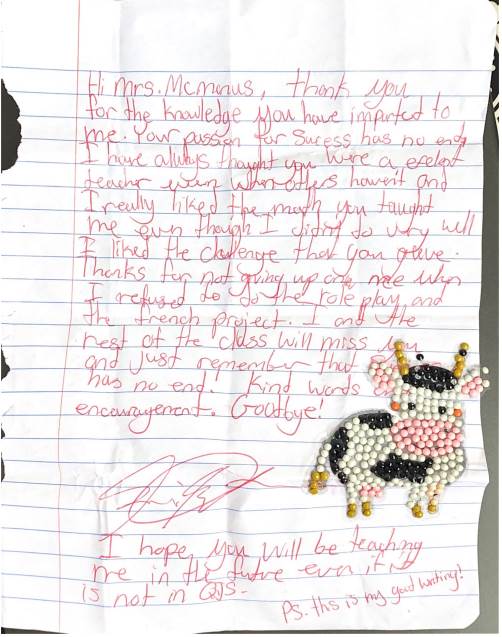Educators value the success of all students. Educators care for all students and act in their best interests.
Educators have a privileged position of power and trust. Educators are responsible for the physical and emotional safety of students. Educators respect and value the diversity in their classrooms, schools and communities, inclusive of First Nations, Inuit, and Métis, and other worldviews and perspectives. Educators foster students’ positive personal identity, mental and physical well-being, social and personal responsibility, and intellectual development. Educators engage students in meaningful participation in their own learning. Educators treat students equitably with acceptance, dignity and respect. Educators understand the importance of confidentiality, and protect student privacy, unless disclosure is required by law. Educators do not abuse or exploit students or minors for personal, sexual, ideological, material or other advantage.
When we think about Standard Number 1, we often forget that this also includes physical care for students. As a certified first aider, I have been very attuned to the safety of students in the schools where I have worked.
I have been in many schools watching staff frantically running about, yelling for a certain teacher, and seeking them for first aid. An interesting fact that most staff members don’t know is that WCB first aiders are only SUPPOSED to attend to first aid on adults in the building. The first aid of students actually falls on the responsibility of the teachers In loco parentis. This is something that is truly bothersome to me. Given this information, I will likely maintain my first aid certification for the benefit of my students for the duration of my teaching days.
A little bit of research on this topic led me to some other interesting information as well regarding students and safety risk:
A Guide to School Legislation in British Columbia PART III – THE TEACHER
( British Columbia School Trustees Association) https://bcsta.org/wp-content/uploads/2020/06/PART-3-Guide-to-School-Legislation.pdf
32.5 Teacher Responsibility for Student Safety Teachers have a duty of care to students under their supervision. The courts have described the standard that teachers must live up to as being the same as that of a “careful parent.” This standard recognizes that it is not desirable to try to protect students from every foreseeable risk. For example, all sports activities have inherent risks, but sports are an important part of one’s education. In deciding whether a student activity is too risky, the teacher should consider whether a reasonable and careful parent, with particular knowledge of the nature and extent of risk as possessed by the teacher, would allow that particular student to participate in the activity. For example, the BC Court of Appeal in Thornton v. Prince George School District set out as appropriate criteria for gymnasium activities the following questions: (a) Is the activity suitable to the pupil’s age and condition, mental and physical? (b) Is the pupil progressively trained and coached to do it properly and avoid the danger? (c) Is the equipment adequate and suitably arranged? (d) Is their performance, having regard to the inherently dangerous nature of the activity, properly supervised? The “careful parent” standard (see Guide 11.3) also recognizes that teachers are not likely to be perfectly successful in guarding against known risk, but they have to give the safety of their students no less attention than they would give the safety of their own children. … On the other hand, at certain times a teacher’s responsibility for the safety of students may require that the teacher physically restrain a student – for example, to stop potential or actual violence between students, to remove from a student a suspicious or dangerous weapon, or to prevent injury to persons or property by a hyperactive student. 32.7 Emergency Medical Treatment Part of the duty of care toward students is to promptly provide or obtain medical emergency treatment for them when required. When a need for medical intervention can be foreseen, such as a known life-threatening allergy, the school needs to plan for such an emergency and have a system in place so that teachers or others supervising the child know what to do.
Of course, the heart of this standard lies in the caring of students. I think that it doesn’t matter whether you spend two minutes with a student or two years, there is no way for you to possibly know the future impact of your moments with each one.
I won’t say that I had a tough class for my final practicum, but I certainly had an extraordinarily complex set of twenty-nine grade 7 students. I had to do a lot of breathing exercises and remember that no student starts the year with the expectation that they will have to switch teachers in the middle of it. This little note showed me that I did have a positive impact, even if they couldn’t all show me in person.

